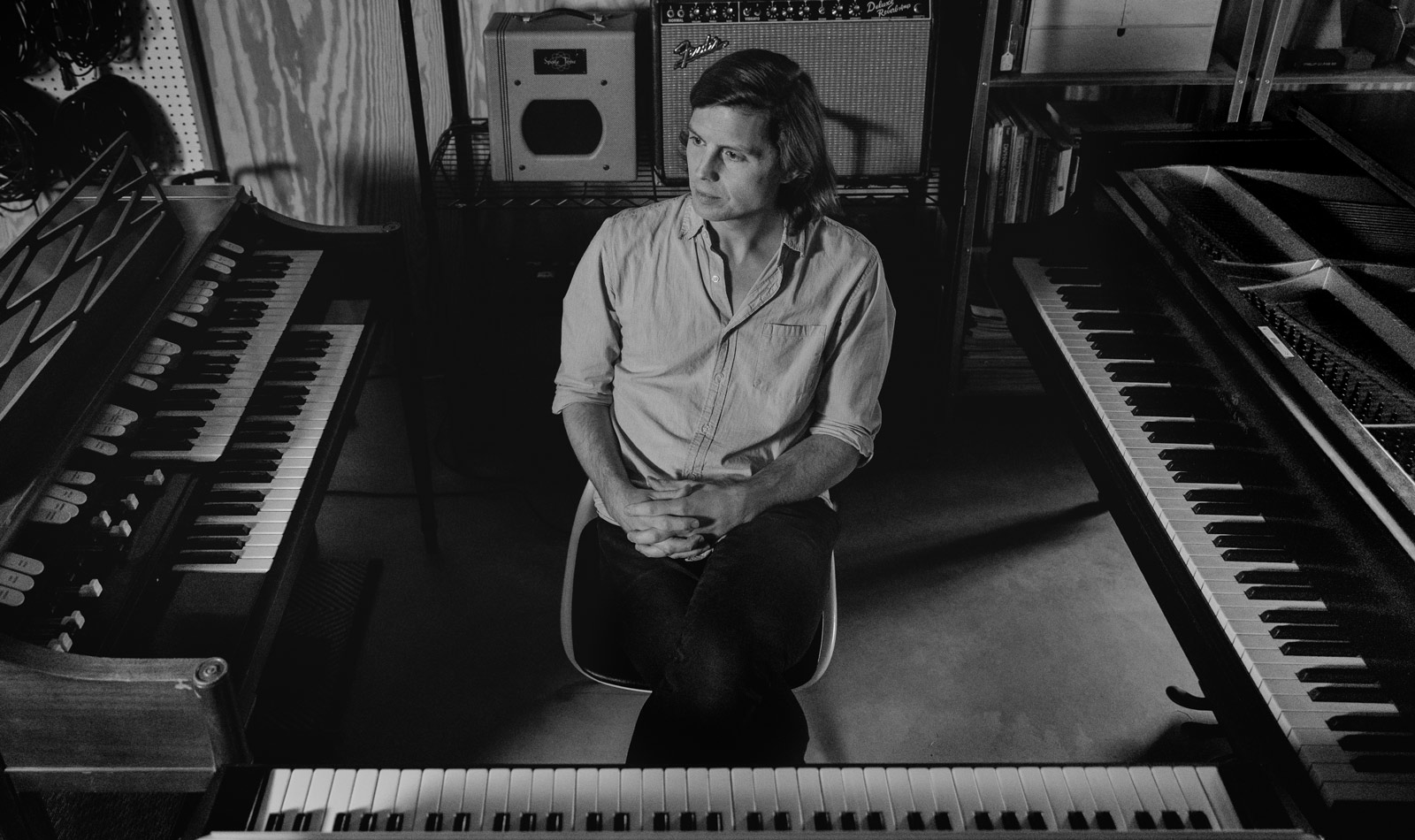“More than anything, this record was about making many little decisions.”
Erik Hall has done something remarkable, even Herculean in scope. By himself, he has home-recorded Steve Reich’s Music For 18 Musicians. The score calls for more than 18 players, in some cases doubling on other instruments. The sheer scope of this task is beyond daunting; let alone the skill required to play this unrelenting music with rhythmic precision. Hall downplays the difficulties and challenges; describing the experience as very enjoyable and even spiritually immersive.
Who is Erik Hall?
To answer that, first we must answer who is Steve Reich and what is Music For 18 Musicians?
Steve Reich, born 1936 in New York, is an internationally recognized composer of Minimalism. Fellow “minimalists” include Philip Glass, La Monte Young and John Adams, among others. Minimalism, in the Reichian sense, is generally the use of repetitive short melodic figures, an often slow harmonic rhythm, echo-like canons and continuous percussive ostinati.
However, Reich differs from his colleagues in the rhythmic vitality of his works. After all, he was a drummer in a jazz band and often his music seems to swing. Or at least grooves.
Music For 18 Musicians, composed in 1976, is a true turning point in Reich’s compositions and 40-odd years later, it remains one of the masterworks of the style. ECM released a recording in 1978; a touchstone still influencing generations of musicians and composers. Slipping outside the concert hall and into rock music, luminaries such as David Bowie, Brian Eno, Peter Gabriel and Robert Fripp have all cited Reich as an influence. (This author included.)
However, for the majority of listeners, this piece, and others like it, sounds like the “record is stuck.” I completely understand this response. It repeats and doesn’t seem to change at all.
But, it does.
Perhaps those listeners cannot discern the subtle changes occurring within the music. Take the opening, “Pulses,” for example. Marimbas and pianos “pulse” in continuous motion as 12 individual chords unfold. These chords are not played by a lush string section, but rather bass clarinets, violin, cello and four women’s voices articulate them in rapid-fire staccato succession. Like an approaching storm or a swarm of bees, it is truly an unearthly sound.
Right from the start, we’re hearing something different. The traditional expectations of symphonic or chamber music are absent. Where’s the first theme? Is this the introduction? The listener is not, to quote a phrase, “in Kansas anymore.” The audience, not on familiar ground, may find this unsettling.
Indubitably so, because Steve Reich has done what all great, seismic-shifting composers do: change the definition of music and how to listen to it.
Personal note: I distinctly remember my first listening to Music For 18 Musicians. It was like floating on a warm, undulating ocean wave or drifting down a wild winding river in a pilot-less boat. For me, and I’m sure for many others, it was simply a transformative experience.
Erik Hall, from his website, “is a musician, composer and record producer in southwest Michigan.” In 2020, Hall recorded all the parts for Music For 18 Musicians in his home studio.
When I read that Erik Hall recorded this masterwork alone in his home recording studio, I couldn’t believe it. All this was done by overdubbing in real time, section by section, without loops or quantization: meaning no help from digital software which can generate perfect loops or correct wonky rhythms. Then to realize he covered all the parts himself, even the voices, I was floored.
If the 1978 ECM recording is analogous to a freighter, then Hall’s version is a sailboat. Or from an imposing monolith to a intricately carved sculpture: lighter in weight, transparent, energetic, warm and grooves like dance music. He has taken this seminal minimalist work, given it a new personality with a joyful new interpretation. The groove, the feel and the spiritual experience remains intact.
I spoke to Erik Hall on April 9, 2024.
More Reich performances:
Falling Angels: https://www.numeridanse.tv/en/dance-videotheque/falling-angels
Biophony Solstice 2024: https://biophony.metropolisensemble.org/projects/biophony-solstice-2024
